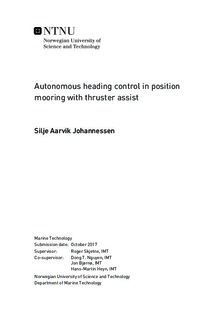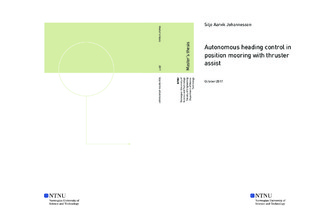| dc.description.abstract | The main topic of this thesis is Thruster-Assisted Position Mooring (TAPM), which is a positioning system for automatic thruster assistance of a moored structure. The system has been commercially available since the late 1980s, and is a cost-effective alternative for offshore oil production compared to permanent platforms.
A literature review on the topic is provided, and mathematical descriptions of an TAPM vessel and control systems are derived. A 6 Degree Of Freedom (DOF) simulation model of a 1:90 scaled model of an Arctic drillship with the name C/S Inocean Cat I Drillship,
in short C/S Arctic Drillship (CSAD), has been established. This simulation model is based on existing models, where for instance the mooring model is based on the Finite
Element Method (FEM). CSAD is further used during simulations of the different control systems in normal conditions.
Since an TAPM vessel is located in the same position over years, the choice regarding its desired position and heading are extremely important. By using the TAPM system optimal due to the environment, the amount of thrust required will be minimized, leading to a reduced fuel consumption, which in turn will reduce both the operational cost and emission.
Two new autonomous heading guidance systems to use in an TAPM operation are developed in this thesis. The main objective of these guidance systems is to determine the optimal heading setpoint. The theory Extremum Seeking (ES) has been investigated in an attempt to find the optimal heading, both fast and accurate. Two approaches of the theory, the sinusoidal perturbation based ES and the numerical optimization based ES, have been used in order to make two autonomous guidance systems for heading. The ES theory is known from other industries, but have until now not been tested for an TAPM application.
In order to obtain a complete optimal control system, the autonomous heading guidance systems have been combined with a guidance system based on setpoint chasing to generate the earth-fixed position for surge and sway. This is further tested on the simulation model CSAD.
From the simulation results, it can be concluded that both of the ES methods can be used in order to seek towards the optimal heading. However, the methods will need to be further investigated and optimized in order to be used efficiently for this application. | |

